Barcelona Calling? Here’s How to Actually Move There (The Real Talk)
So, you’re thinking about moving to Barcelona. I get it. I’ve been living that dream for over a decade now. In that time, I’ve not only navigated my own maze of paperwork but I’ve also played unofficial guide for countless friends who’ve followed. I see that same spark in everyone’s eyes—the dream of sun-drenched plazas, vibrant culture, and a whole new chapter.
In this article
But then I see the frustration when they hit the legendary wall of Spanish bureaucracy. The city’s charm is the real deal, but let’s be honest, the path to calling it home is paved with specific forms, confusing appointments, and a system that has its own unique rhythm.
This isn’t another travel blog. Think of this as the practical, no-fluff handbook I’d give you over coffee. It’s the step-by-step plan to get you from wide-eyed visitor to legal, settled-in resident. We’re going to talk about the real-world stuff—the documents, the order you need them in, and the curveballs you’ll face. Let’s get you set up, so you can finally relax and enjoy the life you came here for.

The Groundwork You Can’t Afford to Skip
Your journey to Barcelona life starts way before you even pack a suitcase. Seriously, what you do in your home country can save you months of headaches later on. Rushing this stage is probably the single biggest mistake I see newcomers make. The system here is like a set of dominoes; you need the first piece to fall correctly to get the rest moving.
Getting Your NIE: The Golden Key to Everything
Let’s be crystal clear: without a Número de Identidad de Extranjero (NIE), you basically don’t exist in Spain from an administrative point of view. It’s your unique ID and tax number. You’ll need it for just about everything that makes you an official resident—renting a long-term apartment, opening a proper bank account, signing a work contract, buying a car, you name it. It’s the absolute foundation.
You have two ways to get this, and one is so much better than the other.
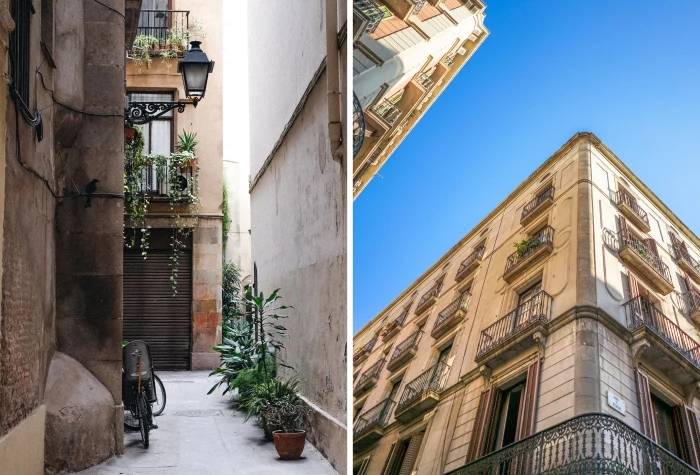
Option 1: At a Spanish Consulate in Your Home Country (The Smart Move)
Honestly, do this if you can. It’s a game-changer to land in Barcelona with this number already in your pocket. The process involves booking an appointment online at your nearest Spanish consulate, filling out the EX-15 form, and bringing a copy of your passport. You’ll also need to state a valid reason for needing it. Good to know: You don’t need a job offer for this! Simple reasons like “to open a Spanish bank account” or “to explore property purchase options” are perfectly valid. The fee is minimal, usually around €10. The consulate will then process it, which can take anywhere from a few weeks to a couple of months, so plan ahead. They’ll either email you the document or ask you to pick it up.
Option 2: In Spain (The Path of Frustration)
If you wait until you arrive, you have to get an appointment (a `cita previa`) with the National Police. This is famously difficult. The online system releases a handful of appointments, usually early in the morning, and they’re gone in minutes. It’s a test of pure persistence. I watched a friend spend nearly six weeks just refreshing a webpage every morning to get a slot. That’s six weeks of being stuck, unable to sign a lease or finalize a job offer. If you go this route, you’ll need the same EX-15 form, your passport, and proof you’ve paid the fee (called a `tasa modelo 790 012`) at a bank beforehand. Trust me, get it from home.

Your Passport Rules the Game: EU vs. Non-EU
Your next steps are entirely dictated by your citizenship. The rules are worlds apart.
For EU/EEA/Swiss Citizens:
You have the right to live and work here, no visa needed. Hooray for freedom of movement! Your main job after arriving is to register as a resident and prove you can support yourself. Your big pre-move task? Just focus on getting that NIE from your home consulate.
For Non-EU/EEA/Swiss Citizens:
This part is critical: you must get the correct visa from a Spanish consulate in your home country before you travel to Spain. You cannot arrive as a tourist and then decide to stay. I’ve seen this trip people up and it’s heartbreaking. The visa process is long and detailed, often taking three to six months, so start this well in advance.
Common visa options include a Student Visa, a Work Visa (which usually needs a Spanish company to sponsor you), a Non-Lucrative Visa (if you have savings or passive income), and the newer Digital Nomad Visa for remote workers. Each one has its own strict list of required documents. My advice? Your first stop should always be the official website for the Spanish consulate serving your area. Rules change, and they have the most current info. For anything even slightly complicated, investing a few hundred euros in a good Spanish immigration lawyer (`abogado de extranjería`) can save you thousands in stress and mistakes.

Your First Week Survival Checklist
Okay, you’ve landed. The Mediterranean air is hitting your face. Amazing! But this first week isn’t for sightseeing. It’s about getting your basic toolkit together so you can actually function here.
First Things First: Get a Spanish Phone Number
Your home country’s SIM card and its roaming charges aren’t a long-term plan. You need a Spanish number (+34) for literally everything. Government offices send confirmation codes to it, landlords will want to call you, and it just makes you look like you’re serious about being here.
The easiest way to start is with a prepaid (`prepago`) SIM. You don’t need a bank account or proof of address. Just walk into a shop for Movistar, Vodafone, or Orange, or a multi-brand store like The Phone House. All you need is your passport and about €15-€20 for the SIM and your first month of credit. You can always switch to a monthly contract (`contrato`) later for better value once you’re more set up.
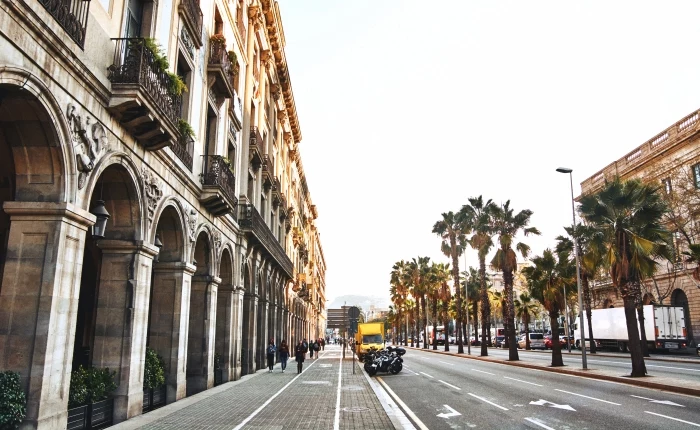
Next Up: Registering at City Hall (The `Empadronamiento`)
After the NIE, this is your most important piece of paper. The `Certificado de Empadronamiento` (or `padrón` for short) is the document that proves you live at a specific address in the city. You need it to get your residency card, access public healthcare, or enroll kids in school.
To get it, you’ll need to book an appointment (`cita previa`) on the Barcelona City Hall (`Ajuntament`) website. You’ll need your passport, your NIE, and, most importantly, proof of address. This means a formal rental contract in your name for more than six months.
Heads up! This is where people get stuck. You can’t get your `padrón` while staying in a short-term tourist flat. A lesser-known trick is to book a mid-term rental (1-3 months) and specifically ask the company if their contract is valid for the `padrón`. Some are, and it’s a massive advantage that lets you get your paperwork started while you hunt for a long-term home.
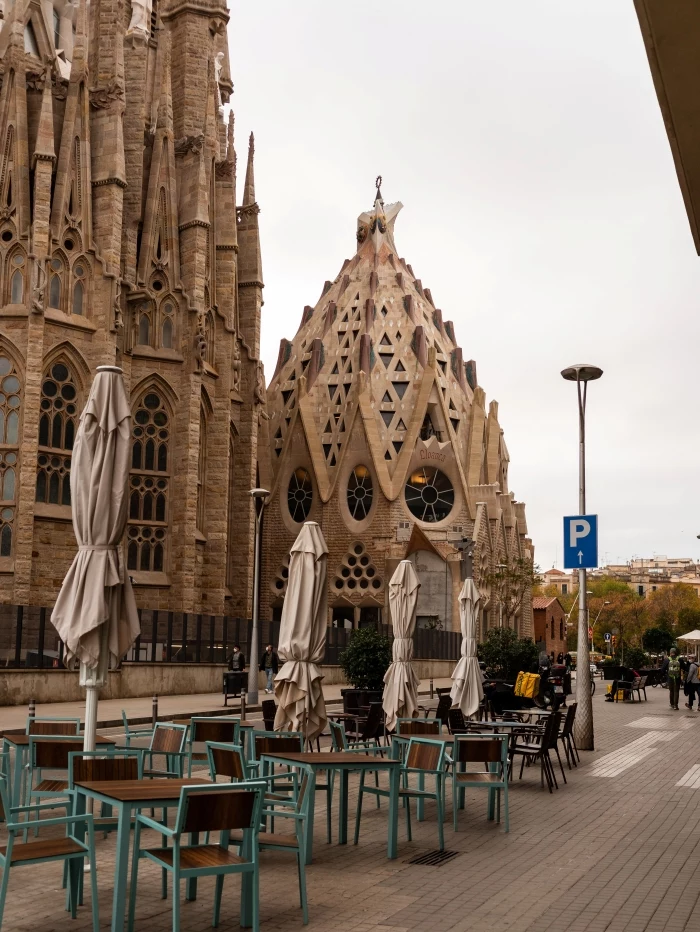
Quick Tip: You can often book your `padrón` appointment online before you even have a contract. The slots fill up fast, so book one for a few weeks in the future. You can always cancel it if your apartment search takes longer!
Building Your Foundation: Residency and Banking
Okay, you’ve got your NIE, a Spanish phone number, and you’re on the city register. Now you can build the final, crucial layers of your new life.
Opening a Real Spanish Bank Account
While fintech apps like Wise or Revolut are great, you will eventually need a proper Spanish bank account. Many gyms, utility companies, and even some employers insist on a Spanish IBAN for direct debits. The requirements at banks like CaixaBank, BBVA, or Santander are pretty standard: your passport, your NIE certificate, and sometimes your `padrón` certificate.
A word on fees: most traditional Spanish banks charge monthly maintenance fees unless you meet certain conditions, like having your salary paid directly into the account. Always ask about a `cuenta sin comisiones` (account without fees). On the other hand, online-first banks like N26 are popular with expats for their simpler, often fee-free structures, but just double-check they’re fully compatible with all Spanish direct debits—sometimes there can be hiccups.
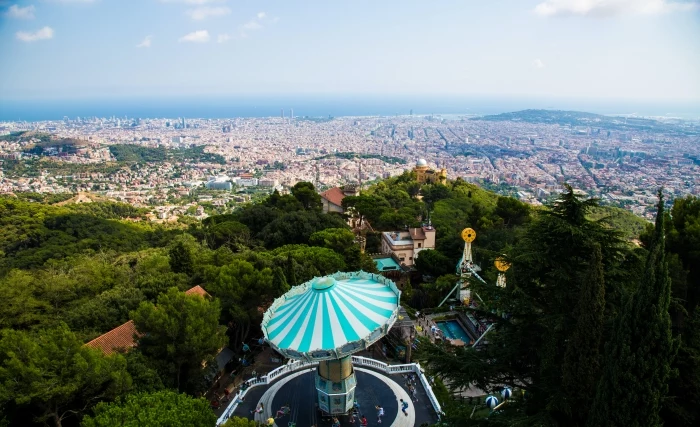
Making it Official: Your Residency Card or Certificate
This is the final step to becoming a legal resident. Again, the path splits here.
For EU Citizens: The Green Certificate (`Certificado de Registro`)
This is often called the ‘green NIE’. It’s not a card, but a green A4 paper that confirms your resident status. To get it, you have to prove you won’t be a financial burden on Spain. This means another `cita previa` at the police station where you’ll need your passport, your `padrón`, the filled-out EX-18 form, and proof you’ve paid the fee. But the most important part is proving your financial means and healthcare. You’ll need one of these:
- A Spanish employment contract.
- Proof you’re registered as self-employed (`autónomo`).
- Proof of sufficient funds (a Spanish bank statement showing over €7,000 is a safe benchmark) AND full-coverage private health insurance.
A personal cautionary tale: The health insurance part is no joke. A travel policy or your home country’s health card is NOT enough. You need a proper Spanish policy with no co-payments (`sin copagos`). I once got turned away from my appointment for having the wrong type. It was a costly and infuriating mistake. Look at providers like Sanitas, Adeslas, or DKV; they’re popular for a reason.
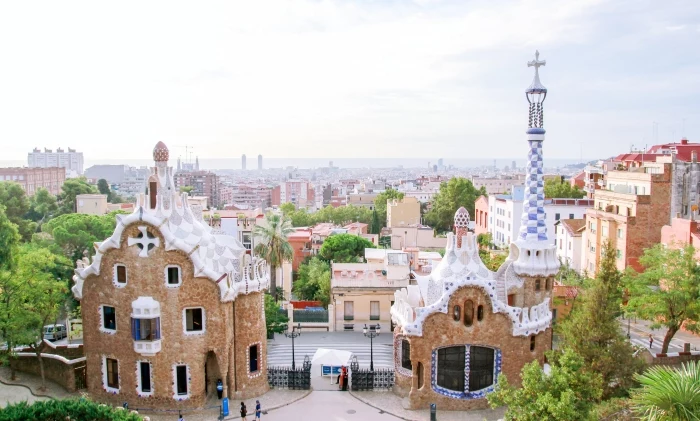
For Non-EU Citizens: The TIE (`Tarjeta de Identidad de Extranjero`)
If you arrived on a visa, you have 30 days to start the process of getting your TIE. This is your physical photo ID card. It involves two appointments: first, the `Toma de Huellas` (fingerprinting), and then about 30-45 days later, you go back to the same office to collect the card. This card is the official validation of your long-term residency. It’s the final piece of the puzzle.
Finding Your Place: Renting in Barcelona
With your paperwork sorted, you can finally hunt for a long-term home. The rental market here is fast, competitive, and, frankly, a bit of a jungle. Being prepared is everything.
Where to Live? A Quick Vibe Check of the `Barrios`
Your neighborhood (`barrio`) will totally shape your experience. My advice? Go walk around them at different times of the day.
- Gràcia: A village-like maze of charming plazas and indie shops. It has a real community feel but apartments can be older and smaller.
- Eixample: Famous for its elegant grid layout and stunning architecture. It’s central, well-connected, and full of great restaurants, but it’s also one of the pricier spots.
- Poblenou: A former industrial zone turned tech hub. It’s close to the beach, has newer buildings, and a more relaxed, modern vibe.
- El Born & Gòtic: The historic heart. Absolutely beautiful and atmospheric, but also packed with tourists. Noise can be a real issue, and apartments are often dark and lack elevators.
- Sarrià-Sant Gervasi: A quiet, affluent residential zone up the hill. It’s great for families but is more expensive and a bit removed from the central buzz.
The Rental Process: Be Ready to Move Fast
The main property portals are Idealista and Fotocasa. Good apartments can get snapped up in hours. Agencies will want to see your NIE, a permanent Spanish work contract, and your last few payslips (`nóminas`). If you’re new, this is tough. Some landlords might accept proof of savings or ask for several months’ rent upfront.
And now, for the financial shock… Be prepared to pay a LOT upfront. Let’s say you find a great apartment for €1,200/month. You’ll likely need:
- One month’s rent in advance: €1,200
- One month’s legal deposit (`fianza`): €1,200
- An ‘additional guarantee’ (landlords can ask for up to two more months): €2,400
- Agency fee (if applicable, typically 1 month’s rent + 21% VAT): €1,452
That’s a staggering €6,252 just to get the keys. It’s a huge barrier for many, so it’s crucial to budget for it.
Safety First: NEVER, ever pay a deposit for a place you haven’t seen in person. Scams are everywhere. If a deal on a stunning, cheap apartment seems too good to be true, it is. Always get a formal contract and, if possible, have a Spanish-speaking friend look it over. It’s a binding document, so it’s worth being careful.
Settling Into the Rhythm of Daily Life
Once the big hurdles are cleared, you can start enjoying the city.
Healthcare and Language
Spain’s public healthcare system is fantastic. Once you’re employed and paying social security, you can get your public health card (`TSI`) and access your local clinic (`CAP`). That said, many people (locals included) also have private insurance for faster access to specialists. For most non-EU folks, it’s a requirement for the first year anyway.
Language-wise, Barcelona is bilingual. Everyone speaks Spanish (Castellano), but the local language is Catalan. You can get by just fine with Spanish, but learning even a few phrases of Catalan shows a huge amount of respect and will open doors. The government even offers free Catalan courses for residents, which are a great way to learn and meet people.
A Realistic Look at the Cost of Living
Barcelona isn’t cheap, with rent being your biggest cost. A one-bedroom place will run you €900-€1,300, while a family-sized apartment can easily hit €1,400-€2,000+. Utilities might be €100-€150 a month. On the plus side, public transport is amazing and cheap—an unlimited monthly pass is currently subsidized to around €20.
My #1 budget hack? Live off the `menú del día`. It’s a three-course lunch you can find everywhere for €12-€18 on weekdays. It’s a massive meal and will save you a fortune compared to eating out for dinner. A coffee will set you back about €2, while a beer is usually €3-€4.
Final Thoughts
Moving to Barcelona is an amazing adventure, but it demands a deep well of patience. The system isn’t built for your convenience; it’s methodical. So, celebrate the small wins—getting that NIE, opening the bank account, receiving your first `padrón`. Each one is a real victory.
And remember, while this is all based on years of real-world experience, rules do change. Always double-check requirements on official government websites. The effort is absolutely worth it. Once the paperwork is finally in a drawer, you can step outside and embrace this vibrant, beautiful city you now get to call home.
Inspirational Gallery
Traditional Bank (e.g., CaixaBank, Sabadell): Offers a full range of services and physical branches, which can be reassuring. However, they often require more paperwork and may have higher fees for non-residents.
Digital Bank (e.g., N26, Revolut): Incredibly fast to set up, often with just your passport before you even have your NIE. Features multi-language apps and low fees. Ideal for getting started, but you’ll still likely need a traditional Spanish account for certain mortgages or state payments.
Most expats end up using both: a digital one for daily life and a traditional one for official business.
Over 22% of Barcelona’s population was born abroad, making it one of Spain’s most international cities.
This means you’re walking a well-trodden path. From networking groups to language exchanges, you’ll find a vast community of people who have navigated the same challenges and are happy to share their experiences.
Get these apps on your phone before you even land:
- TMB App: For real-time bus and metro schedules and route planning.
- Wallapop: The king of second-hand buying and selling—essential for furnishing your flat on a budget.
- TheFork (ElTenedor): To discover restaurants and book tables, often with deep discounts.
- Glovo: For when you’re too tired from apartment hunting to cook. It delivers everything from food to pharmacy items.
What’s an ’empadronamiento’ and do I really need it?
Absolutely. This is your official registration at your local town hall (ayuntamiento). It proves you live in the city and is the key that unlocks the public healthcare system (CatSalut), allows you to register your kids in school, and is required for the final residency card (TIE). Book your appointment for the ‘padró’ as soon as you have a rental contract of six months or more.
A word of warning on finding a flat: The rental market moves incredibly fast. If you see a listing you like on portals like Idealista or Fotocasa, call immediately instead of sending an email. Be prepared to view it the same day and make a decision on the spot. Hesitation often means losing out to someone else.
While Spanish (Castellano) is universally spoken, you’ll see and hear Catalan everywhere – on street signs, in metro announcements, and in daily conversation.
You don’t need to be fluent, but learning a few basic Catalan greetings like
Choosing your barrio (neighborhood) is about choosing your lifestyle. Are you dreaming of a village-like atmosphere with charming plazas and independent boutiques? Head to Gràcia. Prefer grand, modernist avenues, a structured grid layout, and upscale shopping? The elegant streets of Eixample are calling your name. Spend a few weekends exploring before you sign that lease.
Furnishing your first Barcelona apartment can be a challenge, especially with the unique dimensions of older buildings. Here’s where to look:
- IKEA: The reliable go-to for basics. The Badalona and L’Hospitalet stores are both accessible by public transport.
- Maisons du Monde & Kenay Home: For when you want to add more character than the standard Swedish fare.
- Wallapop: Seriously, don’t underestimate it. You can find high-quality, barely-used furniture from other expats leaving the city.
- Lower your monthly transport costs significantly.
- Stop worrying about buying individual tickets.
- Travel seamlessly across the entire integrated metro, bus, and tram network.
The secret? The T-usual card. It’s a personalized monthly pass offering unlimited journeys. It’s far more cost-effective than pay-as-you-go if you’re commuting or exploring regularly.
You will never be completely at home again, because part of your heart will always be elsewhere. That is the price you pay for the richness of loving and knowing people in more than one place.










